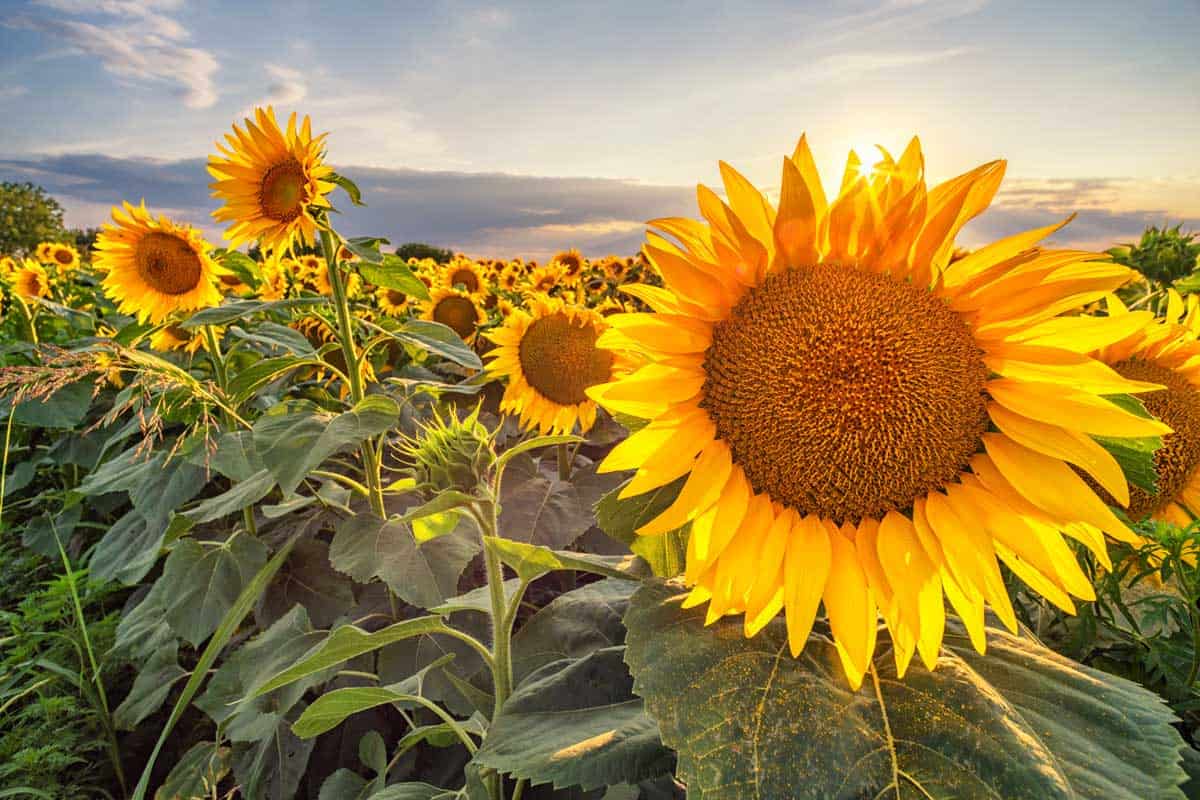 Beautiful, happy, bright sunflowers are sure to light up any garden. This might leave you wondering when the best time to plant them is, so you get the most out of their beauty. We have researched this to get you the best answer possible.
Beautiful, happy, bright sunflowers are sure to light up any garden. This might leave you wondering when the best time to plant them is, so you get the most out of their beauty. We have researched this to get you the best answer possible.When To Plant Sunflowers
Sunflowers are available in both annual varieties and perennial varieties. Perennials return year after year and form messy bushes of flowers rather than the single stalk variety sunflower. Perennial sunflowers can be bought as plants at the garden center and have a head start when they go in the ground. Annual sunflower seeds are usually sown directly in the ground, although you may buy starts at a garden store or farmer's market.
Annual sunflowers will sprout in about 7 to 10 days, but from germination to bloom takes anywhere from 80 to 120 days depending upon the variety. So if you planted in mid-May from seed, you would have blooms in early August. Sunflowers will continue to bloom until the first frost, so you can spread your planting out to keep a continuous supply of these beautiful flowers.
Can You Plant Sunflowers In The Summer?
If you start sunflowers from seed in the summer, you must count forward to your expected first frost date. If the germination to flower time frame is longer than your planting to the first frost, then there's no point in planting annuals. There are faster sprouting varieties like Big Smile, which will bloom in as little as eleven weeks. If you planted these in early summer, you'd probably get a few fall blooms if it's warm where you are.
Click here to see Big Smile seeds on Amazon.
However, if you plant a sunflower perennial like Lemon Queen, you could have some blooms, and then the following year, your plant will be ready to thrive when it comes back in its permanent garden spot.
Lemon Queen is a beautiful perennial variety of sunflowers that is massive and will look great at the back of your perennial garden.
Click here for seeds on Amazon.
What Conditions Do Sunflowers Need To Grow?
What Is The Best Weather For Sunflowers To Thrive?
Sunflowers are a hot weather bloomer. They can deal with a few cool nights when they're first emerging, but typically you want to wait until the soil temps are between 55 and 60 degrees, particularly if you have a long growing season. Like many plants, if you end up with a rainy spring and summer, you must keep an eye out for fungal diseases. If you spot signs of disease on your sunflower's leaves, treat it with a fungicide to get rid of the problem.
This is a zinc-based fungicide that will work well on both vegetable gardens and flower gardens alike.
Click here to see this on Amazon.
Popular Sunflower Varieties
If you want to grow large sunflowers, we suggest a mammoth variety. These will grow up to twelve feet tall, provide you with a harvest of edible sunflowers, and they'll make people smile just looking at them. Start them from seed as early as you can, then sow regularly throughout the late spring to have continuous blooms.
Click here to purchase Mammoth Sunflower seeds on Amazon.
Velvet Queen seeds will provide you with a different shade of sunflower in the garden. These blooms are a deep and beautiful orangey-red color and get to be about 8 feet tall.
Click here for these seeds on Amazon.
Here's another interesting sunflower hybrid called Cherry Rose. This flower grows to about six feet tall and will produce several flower heads per stalk. The color is a brilliant maroon that transitions to white at the tips of the flower. This makes a gorgeous addition to a garden bouquet.
Click here for seeds on Amazon.
Maximillian is a perennial sunflower that will produce dozens and dozens of yellow flowers in the late summer. This plant will reemerge each spring to give you blooms from late summer well into the fall. It's also a favorite of bees and butterflies and other pollinators.
Click here for these seeds on Amazon.

If you're enjoying all things sunflower, we have a slew of other posts here on GardenTabs.com to help you with this gorgeous flower. Here are a few of our favorites:
Dwarf Sunflowers: A Care Guide For Gardeners
23 Sunflower Garden Ideas You'll Love
Why Are Sunflowers Yellow? (And What Other Colors Can They Be)








